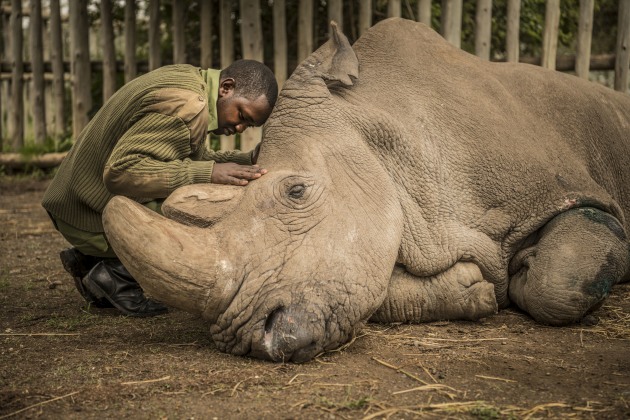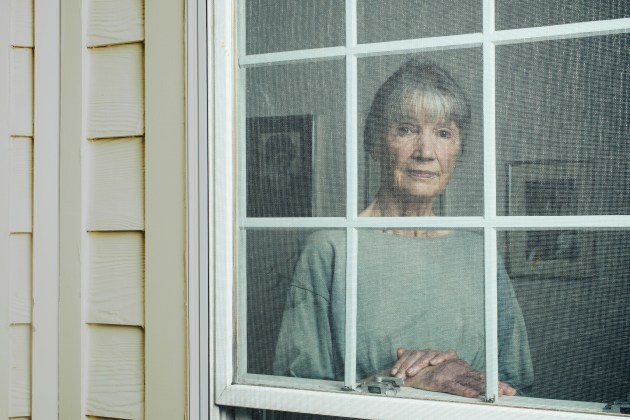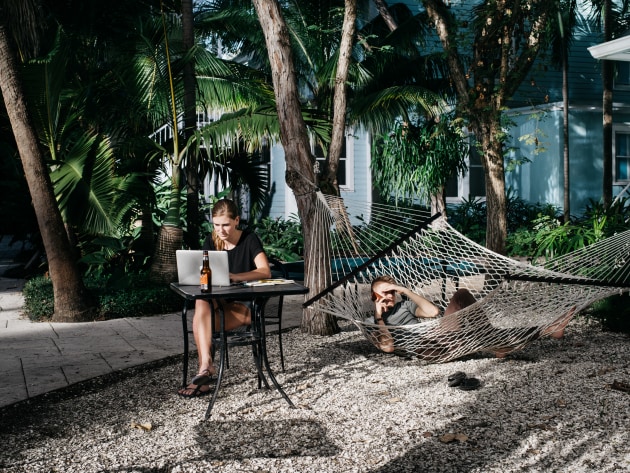The Year in Review - Editorial
With each passing year, the editorial industry seems to demand more from photographers despite offering less. But amongst the shrinking market, new opportunities are emerging to better equip photographers as storytellers and businesses. Christopher Quyen speaks with the industry’s best to see what has changed over the last 12 months, and how photographers can thrive.
How can we do more with less? It is one of the biggest issues currently facing editorial photographers and photojournalists. Budgets may not be declining as drastically as before, with a handful of publications raising their budgets, but photographers are being asked to produce more work for lower rates. Unfortunately, publications are still trying to figure out how to remain profitable while attempting to fulfil the demand for visual content, so it’s not hard to believe that photographers might be at the losing end of that equation. But rather than hang up our cameras and begin mourning the death of editorial, photographers must be agile in this changing market and find new ways to become both better storytellers and businesses to survive.

one of the last areas to be liberated in eastern Mosul.
The digital market
In 2018, Reuters reported that over 50% of the US population consume news and media online and through social media with The Guardian reporting similar statistics for Australia and the UK. Ever since publications have realised that a majority of their audience consume news and media digitally, it has caused an evolution in the market for editorial photographers. Stephen Voss, an American photographer based in Washington, D.C., has witnessed this change in his assignments covering political figures such as Bernie Sanders for a cover shoot for TIME Magazine. “I’ve noticed that more of my assignments are for news organisations that are online-only, like BuzzFeed and Huffington Post,” says Voss. “There are more places than ever to have your work seen and a fair amount of newer media start-ups that have decent budgets and are experimenting with new ways to present work online.” Being based in D.C., Voss has felt that the demand for imagery is greater than it’s ever been. “When Mark Zuckerberg testified on Capitol Hill, for instance, there were as many photographers covering the hearing as I’ve ever seen before. There are days in DC where it feels like a whole month of news happens from the time I wake up until I go to bed,” says Voss.
And it is not just publications that are riding the wave of this change in the market, it is advertisers too. Denver-based photographer, Benjamin Rasmussen, who has shot for every publication from Bloomberg to Condé Nast to a cover of Donald Trump for TIME Magazine, has found instances where publications offer a more generous budget because of companies that are sponsoring articles. “An example is a story I shot that had to feature a piece of tech in it because the tech company was sponsoring the piece,” says Rasmussen.
But Rasmussen says that the trend of shrinking budgets is not always a bad thing as it means that the barrier to entry is much smaller. “If you’re a younger photographer, it’s a lot easier to get access because they’re looking for photographers who are a little bit scrappy,” says Rasmussen. “Editors are now taking risks on photographers they wouldn’t have hired in the past. It’s making them take different approaches and publishing stuff that people never would. For example, magazines are publishing images that I shot on 4x5 film, but in the past editors would always choose the safe, lit, digital picture.”
Despite more avenues of work opening up, publications are asking for photographers to produce more work while providing smaller budgets. “I think magazines like reducing the uncertainty of what they’re paying,” says Voss. “I’ve dealt with more ‘all-in’ budgets where the entire shoot, including expenses is a fixed rate.” For Rasmussen, trying to balance undertaking work with these budgets along with working on more complex bodies of work that improve his portfolio as a photographer has become one of the biggest challenges of his year. “For the most part, people have the same number of pages to fill. They just have less money to pay for less time to do it,” he says. “Because of the size of the budgets, you just end up having to do a lot. Last year, I flew seventy times by July, without an assistant, and I had to fly in on the morning, shoot the assignment, and fly out that evening,” says Rasmussen who documented beauty pageants across various American immigrant communities for Vogue.

The death of print?
With a majority of editorial work now shifting towards digital, assignments deriving from print publications could be at risk, as observed by Sydney-based photographer, Petrina Tinslay, whose work on food, travel, and interiors has received awards such as the James Beard Foundation’s Best Food Photography award. “The continuing closures of key and high-quality magazine titles affects all editorial photographers as the pool of printed editorial avenues decreases. Titles get closed down and larger publishing groups eat up the smaller ones,” says Tinslay. Although print as an avenue of work is becoming less common for Tinslay, she says that perhaps print’s future lies in publications that aim to make long-lasting, high-quality products which Tinslay often finds in the content, imagery, and words of niche magazines.
While this does not signify that print’s time is coming to an end, it does make the market more challenging for photographers to work in. “If you’re shooting for newspapers or magazines like TIME that still have good budgets, you have to realise sometimes those clients are it; there’s really nowhere else to go to in the market,” says Rasmussen.
From the editor’s desk
Taking into consideration the state of the industry, one could assume that the value of editorial photography is declining, but for managing photo editor of The Sydney Morning Herald, Mags King, the issue runs much deeper. King admits that although newsrooms recognise the importance and value of a good photograph, visual storytelling is often sacrificed for words. “We have a strong photo department whose expertise isn’t being tapped into because the newsroom hasn’t changed greatly,” says King. “They don’t fully understand the potential or the changing face of visual journalism. You’ve got to realise that visuals is a part of forming a story and making it cohesive. If you see a photo on the homepage and click on it and it doesn’t show in the story, that’s actually a fragmented experience for the reader.”

King has also seen an increasing trend in assignments focusing on portraiture over documentary photojournalism. She attributes this to the many journalists that never leave the newsroom and are booking case studies for a majority of the stories they’re writing. “Gone are the old days where photographers would go out on the road with journalists searching for stories. Planning doesn’t come into it. There isn’t a lot of time given to planning a story or planning a visual attack or editorial attack,” King says.
In North America, senior staff photographer and co-editor of The New York Times’ photojournalism blog, Lens, James Estrin has also found that the oversaturation of photographers and photographs is responsible for the value of photography declining. “If you do a story and it’s a story that I’ve seen a thousand times before, even if your version of the story is the best version I’ve ever seen, I’m probably not interested,” says Estrin. “It’s not what editors want to see and it’s not what readers want to see. You need to have a different story or a different approach to that story.” Estrin urges all editorial photographers to move towards different visual strategies and concepts to tell their stories and, of course, pursue your passion – “editors want to see what you’re passionate about”.
But despite the industry looking grim this year, Estrin is optimistic about the future of editorial photography. “Agencies have told me that the trend of shrinking budgets and drop in assignments have stopped and there has been an increase in business.” Estrin also reveals that some organisations, such as The New York Times and CNN, have also slightly raised their rates for photographers. However, the true source of Estrin’s optimism comes from modern-day photographer’s becoming better equipped storytellers through self-publishing. “I would argue that it’s a Golden Era for photography and photographers,” says Estrin. “While there might have been more assignment opportunities twenty years ago, there were much less opportunities for our voices to be heard; someone else would be writing the story even if it was my idea. Ultimately, using words, film, sound, and visual imagery we’ve become the author of our stories. We can self-publish personal work and make a name for ourselves. The gatekeepers that once were responsible for giving you an opportunity are not as relevant anymore.”
The war inside every photographer
Perhaps, one photographer who embodies this spirit of self-initiated work is American photographer, Ami Vitale who has spent the last decade documenting the impacts of humanity on the planet for publications such as National Geographic. “The last northern male white rhino who I had been following since 2009 passed away March 19,” says Vitale. “We knew it was coming and somehow he became a powerful symbol, and hopefully a wake up call to humanity.” While Vitale understands that this is not a new story, it is a story that needs years to look at. “My philosophy is that I want to make images that are not just newsworthy and timely, but timeless and lasting,” she says. Furthermore, having a self-initiated body of work makes it easier to pitch to publications and galleries for exhibitions and can introduce editors to stories that you are passionate about.
But documentary photographer Ivor Prickett, a regular contributor to The New York Times, covering Iraq and Syria and the fight against ISIS in the region, says having a platform is also important. While Prickett was documenting the Battle of Mosul, he says that he would have gone and shot it even if he didn’t have the resources, but that having a publication backing him up and providing him resources was invaluable. “I’m very lucky that The New York Times still supports long-term, in-depth storytelling as there aren’t many organisations left in the industry funding journalism in that way.” Furthermore, being in a conflict zone, Prickett needed to gain his bearings and get to know the region which a local stringer for The New York Times helped him with. “In organisations, you have a lot of fantastic people on the ground from stringers to fixers. It was the help of The New York Times local stringer in Mosul who guided me on every story I did,” he says.

Commissioned by The New York Times.
Once Prickett was embedded with the troops, he had free reign to do what he wanted, but the reality is, in a conflict zone, you have to be prepared. “There’s only so much research and preparation you can do, although I knew the focus in Mosul would be on the civilians,” he says. “The image that I took of the woman screaming on the doorstep of her house after a mortar attack had killed her son, we were probably 100 metres away from the mortar when it landed and debris was falling down on us. When that happens, your reaction is to run away and duck for cover and wait until the danger has passed, but, as a documentarian, you really feel a duty to make a picture that captures the devastation. Also having the platform of the NYT is a huge empowering reason to do your job because you know the stories you cover are going to be seen. Luckily in those situations, I was able to hold onto that belief and that’s what kept me going.”
Beyond editorial
Although self-initiated work can pay off and spark relationships with publications that are interested in your story, Vitale says it’s hard not to feel the industry’s downward spiral, but learning new skills and creative storytelling approaches using film, 360 video, books, speaking engagements, and social media have helped her thrive. “I think we need to be much more than just a ‘photographer’ to make it in the business,” says Vitale. “It's tougher than ever and I think a lot of people assume when you work for a prestigious publication, you have made it. But the reality is that to be sustainable, you need to have multiple talents and ways to earn a living.”
So while it is not the most glamorous thing to admit, earning a living through avenues other than editorial is a reality that many editorial photographers will have to come to face sooner or later. Estrin says that there are only so many assignments, photo grants, and awards you can win to make your income, and some photographers will have to look in other markets to pay the bills. “I know photographers at The New York Times who do well editorially, but are shooting high-end weddings,” says Estrin. “Teaching is another large income stream for more established photographers. If you have skills in video, then offer a package since there is much more work for video journalists these days. Even doing assignments for an NGO instead of a publication is a huge source of work.”

Tinslay has also moved a lot more towards shooting advertising and marketing collateral for clients, as well as teaching workshops. “I’ve done workshops with Canon Australia, spoken about my food editorial work at international food festivals, and taught editorial photography workshops in the French countryside” she says. For Rasmussen, it is exactly the ability to go beyond editorial that makes staying in the editorial industry worth it. “Every negative thing about the industry to me is almost cancelled out by the fact that every photographer can be a publisher or distributor,” says Rasmussen. “We’re all marketing experts or public speakers. There are these different aspects of our profession and those are positive. We’re really required to be more multidisciplinary.”
Representation matters
Amongst all the chaotic events that have shifted the editorial industry’s focus this year from Donald Trump’s presidency to North and South Korea vowing to no more war, the editorial industry also experienced its own share of major events. Over the last year, under representation of LGBTQI photographers, women photographers, and photographers of colour was a significant issue in the industry. However, 2018 saw a real focus on issues of representation and a real attempt to balance the scales. More grants to promote gender diversity are being introduced such as Getty’s $10,000 Women’s Photography Grant. Initiatives such as Women Photograph have had a great effect and increased assignments for women by showing that there were fewer opportunities of significant assignments. Diversity Photo, an initiative by Brent Lewis, a photo editor at The New York Times, promotes opportunities for photographers of colour. The idea of using photographers from places of interest who may be better at covering stories in their own country has also come to light with World Press Photo working together with [the photoblog] Everyday Africa to create a database of African photojournalists. “This came from the recognition that, at times, Western photographers practiced what you could call colonialist photography by showing people through sometimes cliché storylines,” says Estrin.

Seeking balance
As the market evolves, editorial photographers and photojournalists will have to do the same. Whether it is pursuing larger bodies of work and creative storytelling or tapping into other markets to supplement their work in editorial, it appears that the glamorous lifestyle of an editorial photographer travelling the world shooting for publication after publication is over. However, it seems like the reason why photographers in the editorial industry keep going year after year is because of the stories they want to share, the importance of those stories, and the effect it has on the greater community. So while we battle with publications and budgets, our ability to tell stories is undeniably getting better with technological advances. Perhaps the industry might just balance itself out for us and give editorial photographers a winning hand.
Contacts
James Estrin |
www.nytimes.com/by/james-estrin |
Mags King |
www.smh.com.au/by/mags-king-h0wc2y |
Ivor Prickett |
www.ivorprickett.com |
Benjamin Rasmussen |
benjaminrasmussenphoto.com |
Petrina Tinslay |
petrinatinslay.com |
Ami Vitale |
amivitale.com |
Stephen Voss |
stephenvoss.com |

Get more stories like this delivered
free to your inbox. Sign up here
.

